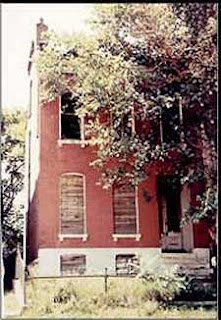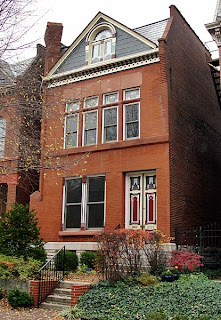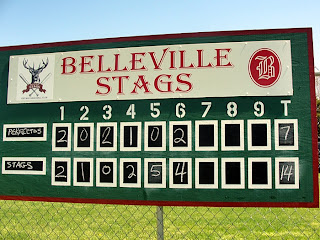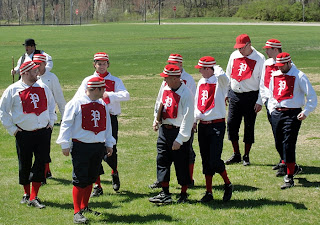How does this apply to the story that I tell in this blog? Because the path of the tornado went right through one of the most prestigious neighborhoods in Saint Louis at the time, and the park where the current Perfectos play our home games: Lafayette Square Park.
The mansions on Lafayette Square were once home to such Saint Louis luminaries as the beer baron Busch family, US Postmaster General Montgomery Blair, famed civil engineer and bridge builder James Eads, US Solicitor General Frederick Lehman, and Supreme Court Justice Louis Brandeis. No lightweights there. Clearly, Lafayette Square was once an elegant and important neighborhood in the history of this city and our nation. But, following the afternoon of May 27, 1896, Lafayette Square was in national headlines for a terrible reason:
 |
| Taken from a New York newspaper reporting on the disaster. |
 |
| Slum D in the "not so glory" days. |
But in the 1970's something remarkable began to happen. A somewhat scraggly (and visionary) band of Missourians began to buy up the dilapidated mansions and painstakingly restore them, and the neighborhood, to its former glory. They formed the Lafayette Square Restoration Committee (LSRC) and fought developers and city hall, who wanted to raze the old houses and remake Lafayette Square. Through the LSRC's efforts, in 1972, Lafayette Square was placed on the National Register of Historic Sites and the restoration took off in earnest. Earlier this year, Sweet Tea and I became the lucky beneficiaries of the hard work and determination of the LSRC when we bought a lovely 125-year-old house on the Square.
 |
| Built in 1888, we have named her "Josephine" |
One of the great things about living in a historic neighborhood is digging up old photos and interesting facts about the place and its history. On the corner of our street stands a towering and magnificent structure known as "Abbey on the Park." The Abbey was built in 1883 as a Presbyterian church but sustained significant damage from the cyclone of 1896.
 |
| 1896: Note the horse-drawn carriage across the street and the people standing next to the fence in the foreground. |
The Abbey today has been restored to its original exterior, but the interior has been converted into eight beautiful condos.
 |
| 2013: The Abbey and mansion next door fully restored. |
The below view of the Abbey displays more of the damage but also a view of our house, third one down on the right.
 |
| 1896: Viewing old photos like this is both tragic and interesting. |
...and the same view of the Abbey today, with our house in the background.
...and another view of the neighborhood showing the stately elegance of some the mansions on the park, lovingly restored to their original conditions.
Given this context, you can see how perfect Lafayette Square is for hosting a vintage base ball team. In fact it is the home park to two vintage teams: the Saint Louis Perfectos and the aptly named Lafayette Square Cyclone.
...but speaking of tragedies:
 |
| Giving up nine aces in the last two innings will do you in... |
 |
| Perfectos (l-r): Danger, Dixie, Walnuts, Hands, Cyclone, King, Pitchfork, Chatterbox, Turnpike, and Stoney. |
The Stags are a gentlemanly group of ballists who have been friendly rivals to the Perfectos for over a decade.
 |
| It's a great day for base ball; let's play two! |
We did play two that day and salvaged the second game by the score of 16-7, evening our record at 2-2 for the young season.
 |
| Stylin'! |
Say what you will about vintage base ball, but it's a lot of fun...and catching a base ball barehanded takes a lot of concentration!
Until next time...and watch out for those cyclones!
Dixie



















